Ever wanted to understand Norwegian culture a little more? Or maybe even bring a little Norwegianness to your own life? We have the answers you’re looking for.
If you’ve ever taken a Norwegian class at any point in your life, no doubt you will have encountered the question hva er typisk norsk? (what is typically Norwegian?)
The correct answer to this question is of course that det er typisk norsk å spørre hva er typisk norsk (it is typical Norwegian to ask what is typically Norwegian).
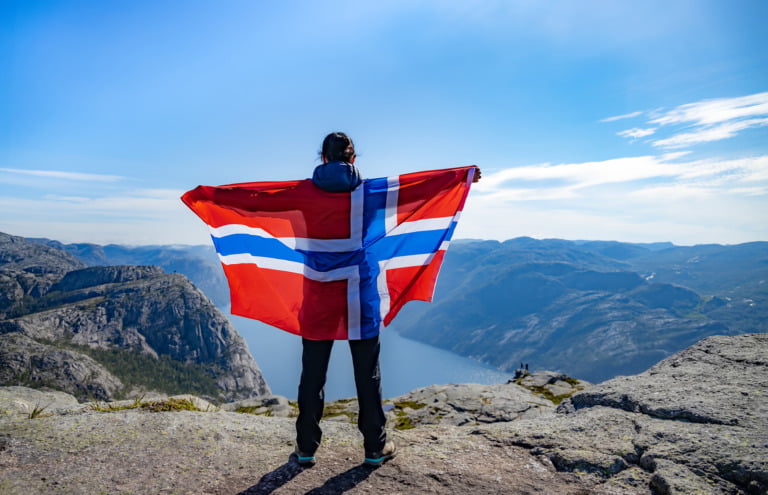
However, it is true that Norwegians, like anyone else, have certain habits specific to their culture.
So, if you really want to know hva er typisk norsk, here are thirteen Norwegian habits that I’ve collected over the years from living in Norway.
1. Take a walk on Sunday
One of the most important principles of Norwegian culture is friluftsliv, or the outdoors lifestyle.
Norwegians will leap at any opportunity to spend as much time outdoors as possible, from casually hiking up the nearest mountain on the weekend to getting up a couple of hours early to go skiing before work (I have friends who do this, I can’t believe I have friends who do this…).
Making time for friluftsliv is particularly important if you live in a city, as it’s an opportunity to escape from the hustle and bustle of daily life and rejuvenate in nature.
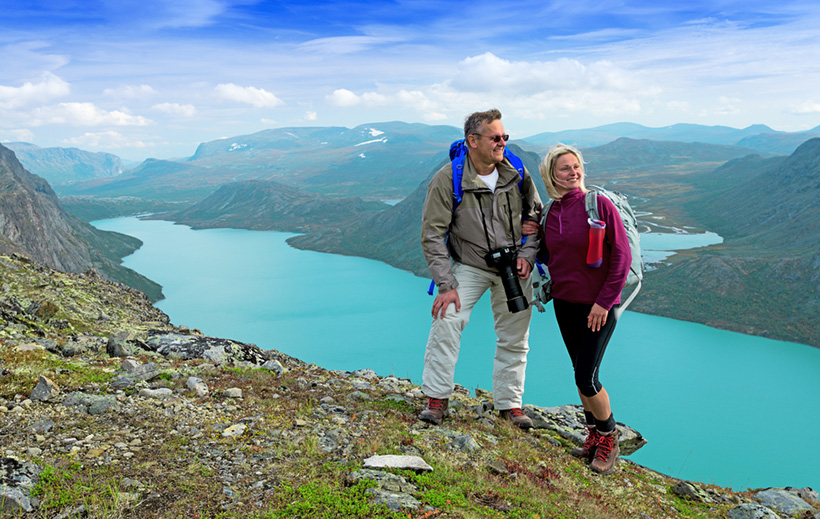
Known as a søndagstur, taking a walk on Sunday is an important part of friluftsliv, particularly for families with children.
Depending on your activity level, this walk can be a casual stroll around your neighbourhood or a trek through the wilderness. As long as you’re spending time outside on a Sunday, it’s a søndagstur.
If you’re looking to incorporate friluftsliv into your life, taking a søndagstur is an excellent place to start.
Even if you’re unable to make Sunday your designated walking day, going on regular walks has a variety of mental and physical health benefits – and you don’t even have to climb a mountain to get them.
2. Dress for function over fashion
Within 100 years of the first Vikings arriving on Iceland, the Katla volcanic system erupted in what Iceland Magazine describes as “the largest volcanic eruption to take place in Iceland in the past millennia”.
You would think that this would make most people rethink their choice of home. But in an act of bravery or sheer stubbornness, the Vikings decided to stay – and the Nordic peoples today seem to have inherited this attitude when it comes to not allowing the weather to disrupt daily life.
While Norway isn’t in danger of any volcanic eruptions, the weather can get extremely cold here.
When I wake up in the morning and see a snowstorm outside, I put on my thickest jumper and woolen socks, and accept that I’m going to spend the day inside.
When Norwegians wake up and see a snowstorm outside, they put on their thickest jumper and woolen socks, and go out in it anyway.
Norwegians believe very strongly that det finnes ikke dårlig vær, bare dårlig klær (there’s no such thing as bad weather, just bad clothes). Bad weather won’t stop Norwegians from their activities. A butter shortage however, will throw the whole country into a crisis.
Personally, I’d rather not go out in any bad weather at all. But since that’s sometimes unavoidable, I can’t fault the idea of dressing appropriately (I’m drawing the line at volcano eruptions though).
3. Maintain a strict work-life balance
The Norwegian job market is extremely competitive. But if you think this means that people work themselves rigid 24/7 in order to stay in the game, you couldn’t be more wrong.
For the majority of jobs, the workday starts at nine and ends at four o’clock sharp – sometimes even at three if the employee has a family obligation or a dentist appointment, or if it’s a day ending in -dag.
According to the Norwegian Labour Inspection Authority, employees are entitled to at least 11 continuous work-free hours within 24 hours and 35 continuous work-free hours within 7 days.
Night shifts, Sundays and overtime are only allowed if absolutely necessary, and even then, this type of work is limited and compensated appropriately.
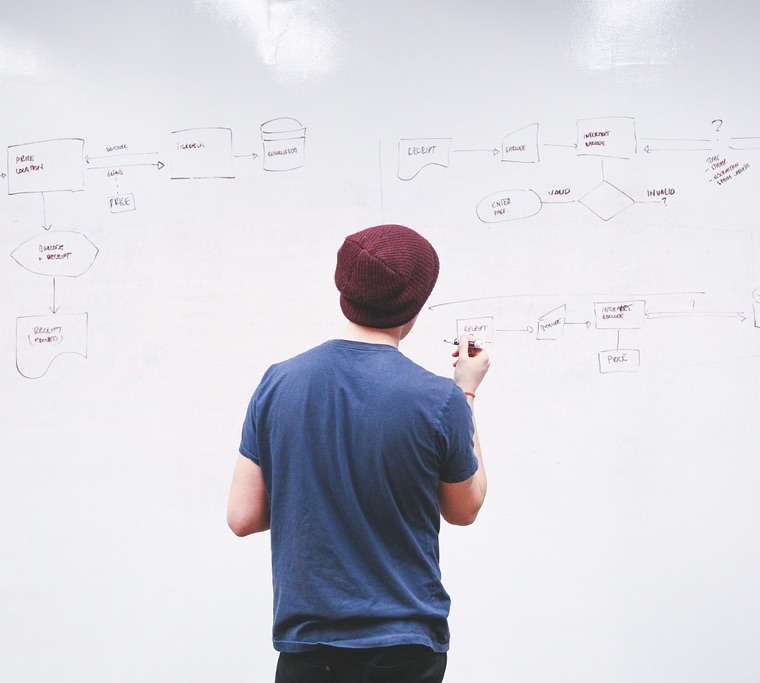
Public holidays are generally treated the same as Sundays in that the majority of people have the day off and those who don’t, receive an increased wage.
Inneklemte dager (lit. squeezed-in days), which happen when there’s only one workday between a public holiday and the weekend, are also often taken off work. And good luck trying to get anything done at all in July!
Occasionally, I have found it extremely frustrating that the country is only operational between certain hours even though life never stops. However, I do much prefer the Norwegian attitude of “working to live” over the “living to work” attitude that is often so glamourised in countries like the UK and US.
4. Go on holiday to “Syden”
In a moment of weakness, my partner once admitted to me that when he was younger, he thought “Syden” was the name of a place.
Naturally, I enjoyed this immensely and haven’t let him live it down (don’t feel too sorry for him though – he’s never let me forget that I was older than I would like to admit when I realised that macaroni was also a type of pasta).
However, unlike my macaroni misunderstanding, his confusion around Syden is understandable. If you ask a Norwegian where they went on holiday, they will likely mention Syden as a destination. But where is Syden?
Literally translated, Syden means “the south” – but it’s a bit more specific than that. Denmark is south of Norway, but you’ll get some funny looks if you describe your holiday to Legoland as a trip to Syden.
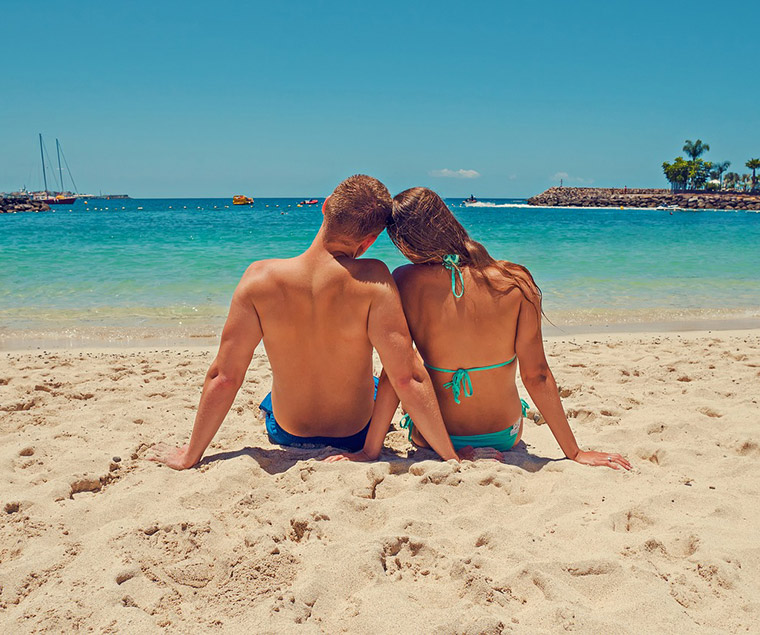
There is no one fixed definition of Syden. The Store Norske Leksikon defines a sydentur (“trip to the south”) as a “package holiday to more southern shores, particularly trips to the Canary Islands and the countries around the Mediterranean Sea”.
However, according to a discussion on the Norway subreddit, interpretations of Syden range from “any hot and cheap-ish place with a beach” to somewhere warm, pleasant and humid.
Others argue that the destination less important than the type of holiday, as a city break wouldn’t be classed as a trip to Syden, even if the weather is lovely and the food is cheap (let’s be honest – most food outside of Norway is considered cheap to Norwegians).
Ultimately though, you don’t need to know where Syden exactly is to appreciate the value of going somewhere warm and bright for a holiday – particularly if you spend half the year in near or total darkness.
5. Eat “taco” on Friday
A few years ago, NRK aired a comedy sketch featuring a son admitting to his family that he doesn’t like tacos. His family is appalled that he would reject such a beloved Norwegian tradition, with his father growing increasingly enraged as the conversation continues. “I like fajitas,” the son says. “They aren’t tacos!” the father yells back.
Technically, Norwegian tacos aren’t “tacos” either – at least not in the traditional sense. They actually have their roots in American tacos, and were introduced to Norway in the 1960s along with an increased import of American food. Their popularity soared in the 1990s, and now tacos are as much of a national dish as pinnekjøtt or lutefisk.
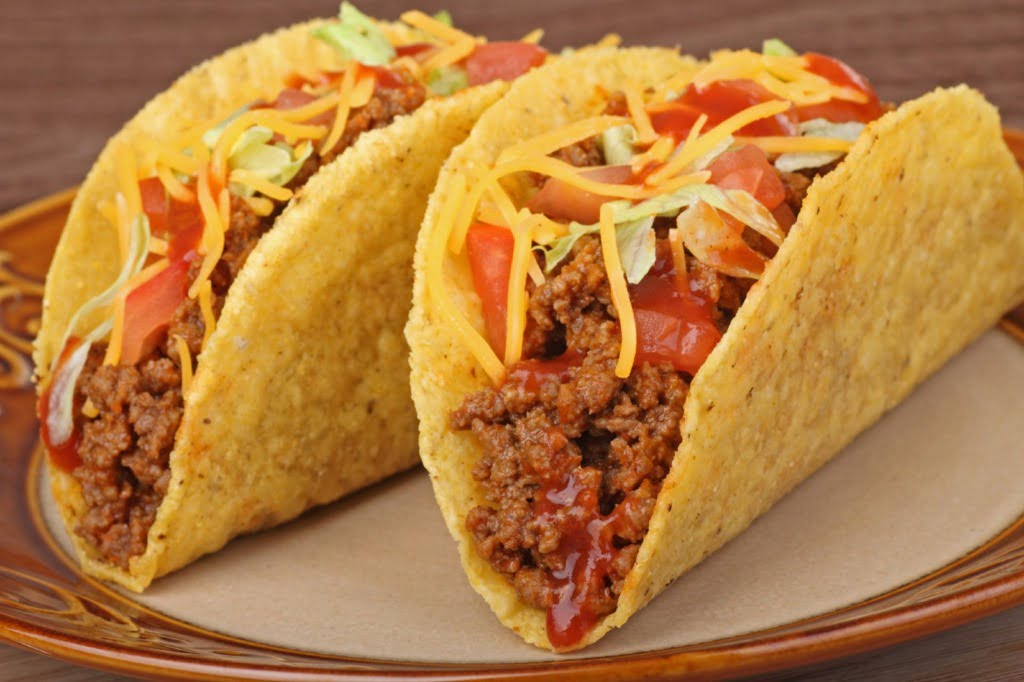
Norwegian tacos typically consist of minced meat, salad, salsa, cheese and sour cream, all wrapped in a tortilla. The food is laid out in different bowls so people can pick and choose what they want.
All Norwegian supermarkets have at least one section dedicated to Old El Paso and Santa Maria Norge products – the holy grails of Norwegian taco foods.
I just want to stop here in case any Mexican readers are currently having a heart attack and emphasise that Norwegian tacos are as Mexican as Grandiosa pizza is Italian (that is to say, they’re not).
Read more: Are Norwegian Tacos Really Tacos?
Typically, Norwegian tacos are eaten on Friday evenings and it’s easy to understand why. After a long week of work, most people want a dinner that’s simple to make, relatively cheap and extremely filling – and tacos fit the bill perfectly.
According to a 2018 Ipsos survey, approximately 13% of Norwegians eat fredagstaco (Friday tacos), while 84% eat tacos at least once a month.
So, if you’re looking for an easy and hassle-free dinner for Fridays, you might want to consider adopting the fredagstaco tradition yourself (though I would emphasise that they’re Norwegian tacos if you ever find yourself in Mexico).
6. Drink coffee whenever you want
Think that coffee is just a drink to wake you up in the morning? Think again.
On a hike? Coffee. Working at your desk? Coffee. Meeting friends? Coffee. Relaxing in the evening with a book and considering going to bed soon? Coffee.
Of course, not all Norwegians like coffee. I’m a British person and I hate the taste of black tea (and given that most Brits tend to drown their tea in milk and sugar, I suspect that they don’t actually like it much either).
But enough Norwegians do drink coffee that Norway has the second highest coffee consumption in the world, drinks around 9.9 kg of coffee per capita annually.
Personally, I have fully embraced Norwegian coffee culture. Taking a kaffepause (coffee break) can be a really nice way to take a break from work, particularly if you’re looking at a screen all day, and I really love catching up with friends over a cup of coffee and a cinnamon bun.
However, even I start to feel an increasing sense of dread when visiting Norwegian family in the North and my partner’s mother pours me a fresh cup of coffee at 7 in the evening.
So, if you’re looking to get into coffee culture but are cautious about that much caffeine, just remember there’s no shame in swapping to decaf (I definitely won’t tell on you!).
7. Eat (much) earlier in the day
Most people know that Norway’s most important export is oil. However, before Norway discovered that it was sitting on a pile of black gold, it was an agricultural society and evidence of this can still be seen in society today.
Read more: Running a Farm in Norway
Traditionally, Norwegian farmers had to get up early in the morning to feed the animals and make as much of the sunlight as possible, particularly in the winter. While the majority of Norwegians today aren’t responsible for feeding a farm, they still eat their meals earlier than most non-Norwegians are used to.
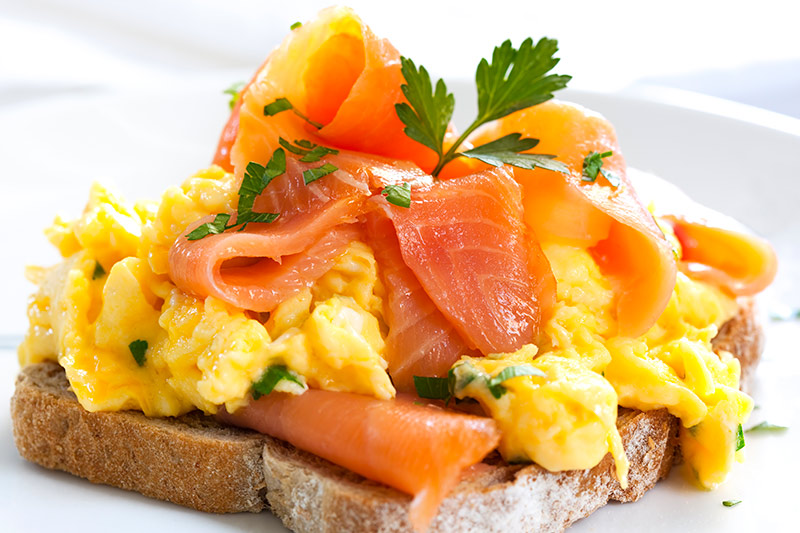
A typical Norwegian meal schedule consists of frokost (breakfast) when they wake up – though it might be more accurate to just call this meal “morgenkaffe” (morning coffee) instead. This is followed by “lunsj” (lunch) between 11 and 12.
Middag (dinner) is eaten when they get home from work, usually between 4 and 5. If they’re still hungry later on – and I’m not sure how you couldn’t be – Norwegians may have kveldsmat (evening food / supper). And of course, there are lots of kaffepauser in between.
I’m a night owl, and this early schedule doesn’t work well for me at all, as I’m still cradling my morning cup of coffee at a time when Norwegians are buttering their “smørbrød” (open sandwiches) for lunch.
However, if you’re one of those weirdos – sorry, I mean, early birds – who enjoys rising with the sun, then maybe a Norwegian schedule is perfect for you.
8. The Norwegian arm
Growing up in the UK, I was taught from a young age that if you were sitting at the dinner table and wanted something out of reach, you should ask someone to pass it to you rather than leaning over to get it yourself.
Therefore, whenever I’m eating with Norwegians and an arm suddenly stretches over me to get the salt, I’m seized with a near uncontrollable urge to stab the offending limb with my fork.
To a lot of non-Norwegians (and British people in particular), the “Norwegian arm” is the height of rudeness.
However, as many Norwegians have quickly explained to me as I brandished my fork in their face, they consider it to be much ruder to interrupt your meal by asking you to pass them something they could get themselves.
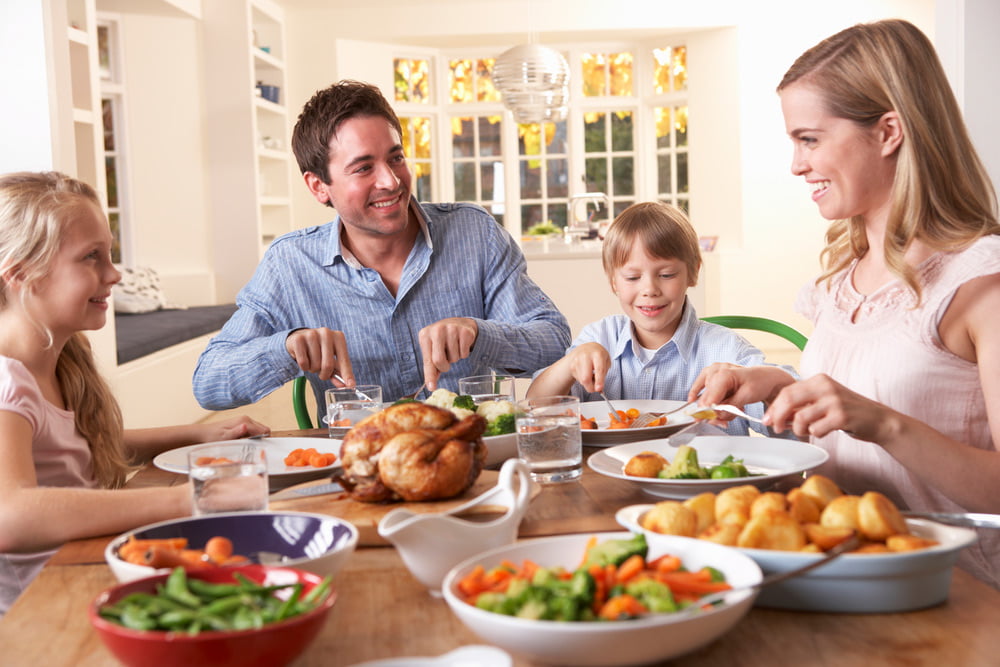
Personally, I think I would much prefer being interrupted than risk a sleeve dipping in my pasta. However, I have softened to the Norwegian arm considerably, particularly as there are rules for when it is acceptable.
The Norwegian arm can only be used to get something easily in reach without having to stretch for it. For anything else, Norwegians will ask kan du sende meg…? (can you send/pass me…?)
The Norwegian arm has actually been enthusiastically embraced by my family in the UK – to the point where instead of saying “Excuse me, can you pass the salt?”, they’ll just yell “NORWEGIAN ARM!” before lunging across the table.
This isn’t quite an accurate application of the Norwegian arm, but it’s definitely made meal times more exciting.
9. Do your shopping in Sweden
In December 2019, the Norwegian Institute for Consumer Research (SIFO) published a report that confirmed something everyone living in Norway already knew: “that Norway has higher prices and a more restricted selection of goods than [its] neighbouring countries.”
Norway is expensive. As of January 2021, the country places third on the Big Mac Index, with a McDonald’s “Big Mac” burger costing approximately USD 6.09.
Ironically, Sweden actually places second on the Big Mac Index, with a “Big Mac” burger costing USD 6.37. However, while eating at McDonald’s might be more expensive, everything else is generally cheaper in Sweden compared to Norway.
It is hardly surprising therefore that hopping across the border to Sweden to stock up on supplies, known as a harryhandel or harrytur, is a beloved Norwegian tradition.
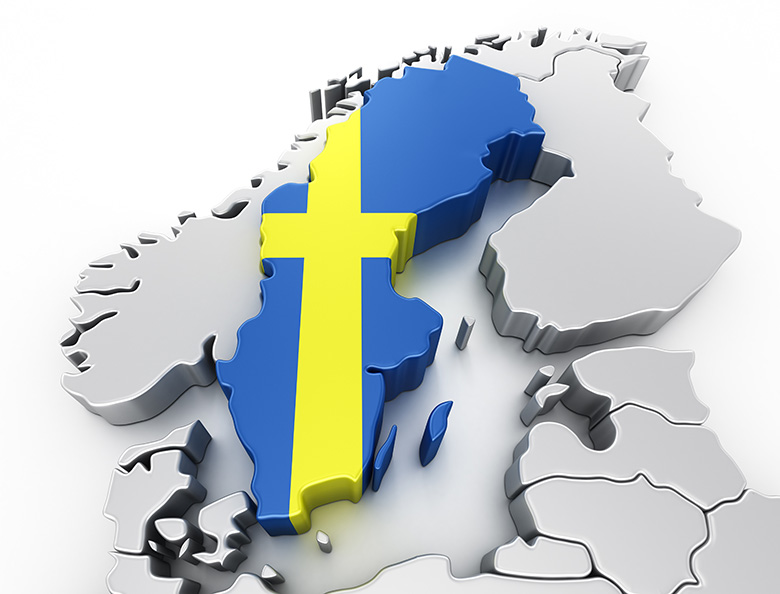
In theory, you could go on a harryhandel to any country, and taking the ferry over to Denmark is also fairly common.
However, due to the proximity and ease of access, Sweden tends to be the destination for the majority of Norwegians looking to save some money.
It’s debatable how much Norwegians save on harrytur. Not only does it involve a travel cost, but the cheaper prices might tempt you to buy more than you usually would, and you can easily end up spending more money than if you had just gone to your local Kiwi. But hey, it’s a nice trip!
10. Use snus, not cigarettes!
While there are many different types of snus, the most popular form of snus in Norway is technically “Swedish snus”.
It’s generally sold in small, circular tins that contain multiple portions. Each portion consists of tobacco powder wrapped in thin, papery sachets that are discreetly placed under the top lip.
Norway has extremely strict smoking laws, and the number of smokers in Norway has been steadily decreasing for a number of years.
In contrast, the number of snus users has been steadily on the rise since 2000, and in 2019, Statistics Norway reported that 14% of Norwegians aged between 16 and 74 use snus daily, while 9% smoke daily.
Norway has not always managed its snus effectively. On 1 July 2017, all the snus boxes were changed to have the same khaki green appearance with white font, as part of the Norwegian government’s efforts to take “a step closer to a tobacco-free young generation”.
This strategy however backfired, as people overall thought that the new design was extremely stylish and attractive – to the extent that some people who had already given up snus, considered starting again!
Due to the potential health risks, I wouldn’t encourage anyone to start using snus if they don’t already. It’s also important to note that selling snus is illegal in all EU countries except for Sweden.
However, some people argue that snus may help people quit smoking, as it still contains tobacco but is less dangerous than cigarettes.
11. You don't need a pandemic to practice social distancing
When the first lockdowns due to the coronavirus were introduced in March 2020, lots of memes began circulating about how Scandinavians had been social distancing long before it was necessary to do so:
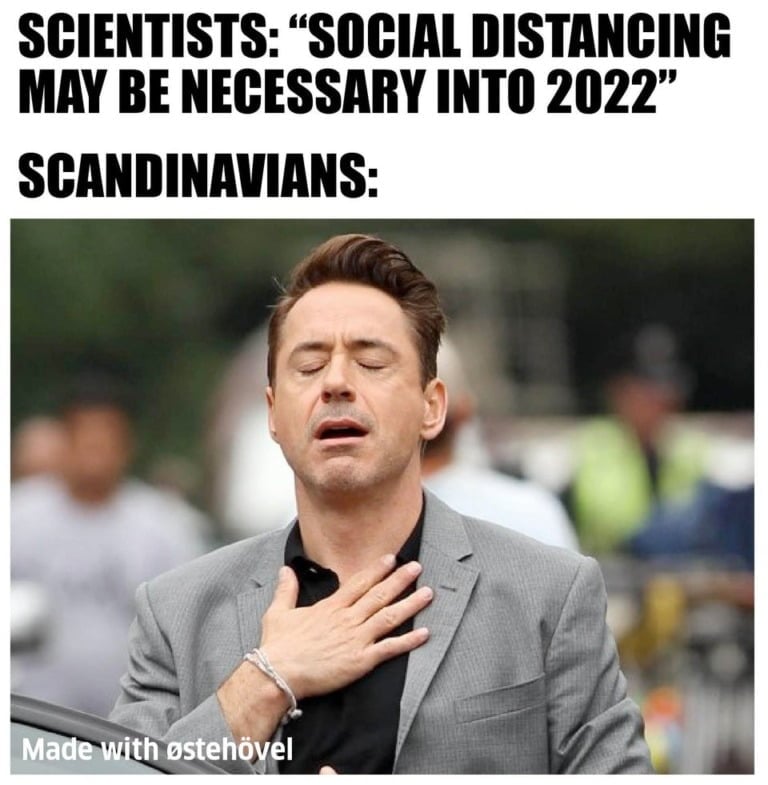
Obviously, Norwegians have still struggled with isolation and loneliness in the pandemic, but it is true that they have a well-earned reputation for being socially reserved.
In Norway, social interactions tend to be conducted on a needs basis. I remember my own partner admitting that he probably wouldn’t have spoken to me at all if we hadn’t been working the same coffee shift (which honestly would’ve been his loss).
In addition to being extremely frugal with their social interactions, Norwegians also really value their own space. Nothing sends Norwegians spiralling into a panic more than sitting next to them on a bus when there are lots of other seats available.
While non-Norwegians often interpret this as Norwegians being cold or stand-offish, it also relates to their ideas of politeness. In Norway, being polite strongly focuses on not bothering anyone else or making a nuisance of yourself.
Rather than being offended that they’re pretending you don’t exist, take it as a sign of respect that they’re treating you how they want to be treated. And how they want to be treated is for you to also pretend that they don’t exist. It’s a win-win all around.
It definitely took me time to get used to the fact that Norwegians will react to people around them the same way that humans react to T-Rexes in Jurassic Park.
However, there is also peace in knowing that you can sit on the bus and just relax or listen to your podcast without being interrupted.
That said, it’ll be nice for this pandemic to be over so that we can all socially distance by choice again.
12. What happens at the pub/afterski/helgefylla/julebord, stays at the pub/afterski/helgefylla/julebord
The first rule of Fight Club is don’t talk about Fight Club. Similarly, the first rule of drinking with Norwegians is not to talk about whatever happened when you were drinking the next time you see them.
As we said in point 9, things are very expensive in Norway – and alcohol is no exception to that rule.
According to pintprice.com, the average price of a pint of beer in Norway is around GBP £6.89 (second only to Greenland, where a pint costs GBP £7.19).
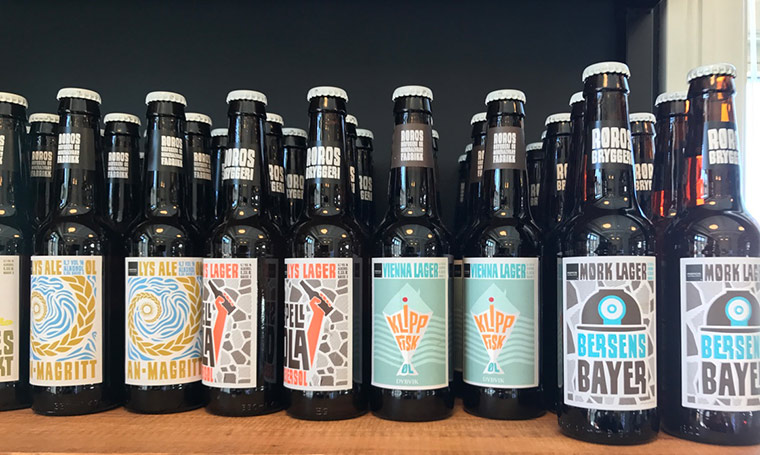
Not only does more expensive alcohol mean that drinking tends to be reserved for specific times, such as on the weekends (known as “helgefylla”), at the work Christmas party (“julebord”), or in the evenings after a day of skiing (“afterski”), but when alcohol is drunk, a lot of it tends to be downed in one go.
And once the drinking starts, it’s only a matter of time before the social rules that sober Norwegians love so dearly are completely abandoned and chaos reigns supreme.
Personal space? Forgotten! Inappropriate questions about your family history? Absolutely! Clambering on tables and loudly singing the national anthem to the entire room? You betcha – and we’ll drag you up to join us for the encore!
Read more: Norway's Dice-Based Ranking System
However, this break in social code is only allowed on the condition that no one acknowledges that it happened when they’re sober. More than once, I’ve socialised with Norwegians on a night out, only to be blanked by them the next time I saw them – as if we hadn’t spent an entire evening in a deep conversation about which type of cheese is best.
As with point 10, I wouldn’t particularly encourage this Norwegian approach to drinking for a variety of reasons. If you’re in Norway, you’re much more likely to build lasting friendships by joining a club or a society than you are down the pub.
13. Take off your shoes inside
Norwegians feel very strongly about taking shoes off inside the house – and to be honest, they’re not the only ones.
Do you really think that after I’ve made you tea and offered you my favourite biscuits that I also want to clean my floors because your shoes have left messy footprints on them?
Take them off.
Take. Them. Off.
Do you share any of these habits? What are some Norwegian habits you’ve noticed? Let us know in the comments.


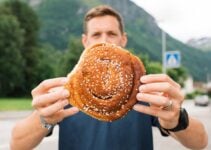
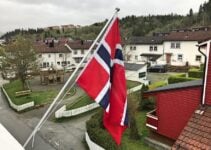

Thank you for the articles you put on the web but answer me one thing.
You say you are British but why do you always translate NKR to American dollars instead of £s?
It is standard style for the website, irrespective of the writer. The vast majority of our readers are from outside Norway, and most of them are from the US. Add to this that the value of the USD is widely understood throughout the world.
Interesting to see that Norwegians still enjoys the outdoors. I immigrated in 1957, went back 30 years later and realized Norge is a wealthy country, totally different from my growing up. Appreciate your writing.
Åge Førre
(Oge Forre)
Enjoyed this article very much. Thanks
I live in UK, but married a Norwegian girl in 1964 (she died in 2012), but our son and his wife and family live there now, so I have frequently visited Norway for over fifty years. In that time I have noticed many changes, but there is one particular constant (with reference to what you call the “Norwegian Arm”) and that is many things that the British consider “bad manners”, the Norwegians consider “good manners”.
When will they ever learn?
So according to you the only right way to do something is the British way? We also have another say in Norway. Ta seden dit du kommer. Meaning when in Rome do like the Romans. I am Norwegian and I have lived in 8 different countries and that’s what I do. By the way I also lived in Italy for 10 years and just came back from a trip there (I have family there) and guess what, They also reach over like we do in Norway.
Maybe tongue in cheek sarcastic humour is also something that doesn’t transcend the north sea well. I know we brits may sometimes be self aggrandising but in this case i would say he was joking.
Following on from my previous comment, you mention pints and beer in your article. There is no beer in Norway. It is lager or pilsner, known in the UK as Euro-fizz.
Alas, you could not be more incorrect with your statement. Times have changed. Several craft breweries are going strong. Haandbryggeriet, Lervig, Stjørdalsøl, Austmann, Kinn, Ægir, Nøgne. Around 80 breweries and a hundred local pub brews. Choose from HeffeWeisen, Porter, Stout, blondes, reds, belgian trippel, bock, IPA etc.
–>Nøgne Ø even makes ‘sake’
which is exported to TW. First & only one in Europe. It’s that good!
Maybe time to rethink and sample?
You’re right James.. We have old traditions regarding homemade beer, but it is just few years back we were allowed to make local beer for sale.
I remember Belgian beers in many places😉.
One thing not mentioned is the bedding. I immigrated to the U.S. when I was 5 years old and grew up with the single bed down duvet that adults also have even though they share a bed. This is a very weight free and double sheet free way of being able to cocoon up in your own space and temperature without your partner yanking the covers off you in the middle of the night not to mention your toes getting squished under the double sheet tuck in. The duet cover gets washed with the bottom sheet not to mention the duet gets pulled back for airing out the bed in the morning. Just fluff and the bed is made. I have to buy these single bed duvets when I visit Norway. They do not exist even online.
Hi Eli,
I feel exactly the way you do!! I moved to the states to go to school when I was 20, and brought my own Dyne. I bought dyner in Norway for each of my children as they came along. Now, my partner really likes the way he is used to, so we sleep under the heavy blankets and quilts at his home, (boy, they get messy!!) and we each have a dyne at my home. It’s tricky!
Hello Eli, l live in the US and l buy my duvet covers from Pottery Barn, lovely cotton in many colors… on line n store. Look it up?!
We shop for our duvet covers and duvets at IKEA in the states.
I lived 20 years in Norway and am now back in the UK. Practically EVERYONE in the UK uses duvets…..just like the Norwegians! You can buy them everywhere. Can’t believe you can’t buy them in the US!!
Hmmm…I’m in the U.S. and haven’t ever had an issue finding duvets.
How about the bedding? The single bed down duvets were brought over from Norway when we immigrated to the U.S. They are weightless and free of the double sheet toe squishing. Not to mention having the ability to cocoon up for your own temperature and no one yanking the shared covers off of you. Plus you can air out the bed by fluffing the duvet back and the cover gets washed with the bottom sheet.
Definitely SHOES OFF in my house!
I am an American that spent many full summers in Norway as a small child up until adulthood. One of the things I picked up without even realizing it, (besides almost all you mentioned in your article) was to eat with the fork in my left hand and knife in my right hand. I am right handed naturally, yet this way of eating seems perfectly normal to me. They may eat like this in England as well. The rest of my family (who didn’t travel as I did) all eat the American way, where they switch hands for cutting, but eat with the fork in their right hand, after placing the knife down after cutting.
100% I required that my American husband learn to eat the Norwegian way. I couldn’t imagine raising a family and seeing my children grow up without Norwegian table manners.
Good grief!! Do Americans eat that weird way? Of COURSE we eat with knife in right hand and fork in left here in UK….just as in Norway (where I lived, and worked, for 20 years with my Norwegian husband)
when I first moved in with my Norwegian fiance (I am from the U.S.) and our first night, we each retreated to our single bed down duvets, I thought, “Whhhaaaaat?” “Oh no, this will not do….” I think in the U.S. we are used to snuggling together under one cover, or one set of sheets, the old romantic, “falling asleep in each others’ arms.” How long does this last before we long for a good night’s sleep? Funny that, after time, the single cozy duvet promised a gooood night’s sleep, and the cozy factor increased without loss of togetherness. It’s just how it’s done 🙂
The workday starts at nine and ends at four o’clock sharp?? Not anywhere I have worked since coming to Norway over 40 years ago. Starts at eight and ends at four, perhaps? With half an hour for lunch that’s 37.5 hours in a week.
For most office workers, the 37.5 hour week is nominal only. Priority is given to getting things done right and on time rather than working the appropriate number of hours. That means that Norwegians will work more when needed, but have flexibility to work slightly shorter days to be able to deliver kids at the kindergarten in the morning or pick them up in the evening, or leave early to beat traffic when going away for the weekend. It’s an arrangement that works for everyone, employers know they can trust their employees to deliver, and employees are able to have a rich life outside of work.
Totally agree! Was just like that for the 20 years I lived and worked in Norway. With some companies we worked an extra 15 mins each day, and that allowed us to have several extra days holiday a year with pay ! win – win
it starts at eight and finishes at four. FINAL. 30 minute lunch is standard, if you smoke you have right for 5 minutes pr hour pause to have a smoke. (Do not know any other country that has this)
Hi David,
As a Norwegian living in the US, I enjoy your articles very much and you are totally “right on” with your Norwegian ness. But like Eli, I agree about the down bedding being super important… thank you again for your wonderful writings.
Regards
Annelie
Thanks Annelie, although this article was written by Jess 🙂
Norwegians eat quietly. On one on my visits home to Norway with my husband and five children, I stopped them all before we entered the hotel restaurant for breakfast and I said, “listen”. “What? We don’t hear anything.” “Exactly” I replied. What we did hear was the quiet tapping of forks and knives and coffee cups landing on their saucers. Then, I told my children that they too, would remain quiet. No calling across the room to pour another glass of juice or even so much as a lively discussion about what the day would hold. Our meal was peaceful lovey, and ever so koselig as is the Norwegian way. ❤️🇳🇴
yes, and the first time I rode a subway through Oslo, I could not believe the quietness. And politeness. It felt like being on a meditation retreat. (I grew up in New York.) Or a long bus ride, no talking among passengers, just the stillness of the snow falling outside and the soft “clicking” or the bus driver’s turn signals. I felt like I had entered another world. I did, it’s called Norway:)
Love reading this News, Love Norway, Have been there 3 x’s most of our family still there. I relate to so much of what I read here !!
Tussen Takk
I just chuckled and chuckled at every observation in this piece, having seen EVERY behavior first hand in my travels to visit my cousins in Oslo & Haugasund the past few years (pre-Plague, of course…). Wonderfully astute and funny. And, of course, it makes me miss Norway even more. Nonetheless, tusen takk Jess! Hats (and shoes…) off to you!
How can you forget rømme on pizza?
I still miss rømme, after moving down south to DE 9 years ago.
Great article! Right on!
Another thing about “bord ettikett” … eat sloooowly. Take your time, and enjoy every bite. Small talk is good, and the after-talk is where it’s at. The stories, the news, the family business, etc. it’s all very important. Even while growing up, we ate dinners in this manner, and that lasted a long time.
I remember one Christmas in the States, after I moved here, when I invited my husbands whole, big family to an authentic Norwegian Christmas. I even made a marzipan pig with a red ribbon around the neck for the winner of the almond in the Riskrem. Everything was ready, we sat down to eat, and twenty minutes later, people were leaving the table. I was shocked! Something was very wrong here!
I never did that again, but taught my children about long, wonderful dinners, and we enjoyed many special Christmas dinners by ourselves, besides everyday dinners where everyone told about their day, and about hopes and dreams. As we come together today, our mealtimes are our favorite time together, and even my many grandchildren know how it works.
I standby my comments on Norwegian beer, compared with English draught beer. Although there have been introductions of various types of bottled “beers” in Norway in the last few years, none of them compare favourebly with English draught Real Ale. They are all examples of “Eurofizz”. I have regularly been visiting Norway, and other European countries, since 1962.How many of you Norwegian Eurofizz drinkers have been coming to UK for this length of time and sampled the English beer?
Does anyone really say ‘Eurofizz’? If you are ever in Stavanger head to Cardinal Pub for an amazing range of beers … and prices to match.
You are correct John, noone says “Eurofizz” except Big Frank 😀
Punctuality. Norwegian children learn to tell time before learning to read. 4 year olds wear wrist watches. It is rude to be early and rude to be late.
In Hungary, we also take our shoes off in other people’s houses. It’s a really interesting article and I love your website. I hope to visit Norway one day.
I love this article! It is written in such an entertaining tone and with such good humour. You’ve put a positive spin on the things I find scary about Norway (stand-off-ish people, being blanked, etc.)
We have just come home from a holiday in Norway and I have to say I don’t find the Norweigan’s stand offish at all. They were all so friendly and most wanted a chat when they knew we were visitors from the UK. I think my son spoke to every single political party that were campaining on the street – all of them spent time chatting with him about the various parties, policies and politics. Waiters took the time to chat, drivers were courteous and the people we stayed with were really warm and friendly. So no, I can’t say I find the Norweigens to be cool in any way.